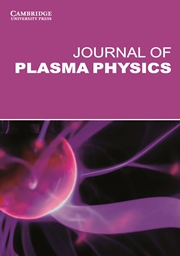Article contents
Longitudinal characterization of the wake and electron bunch in a laser wakefield accelerator
Published online by Cambridge University Press: 07 January 2019
Abstract
Energy chirp compensation of the electron bunch (e-bunch) in a laser wakefield accelerator, which is caused by the phase space rotation in the gradient wakefield, has been applied in many schemes for low energy spread e-bunch generation. We report the experimental observation of energy chirp compensation of the e-bunch in a nonlinear laser wakefield accelerator with a negligible beam loading effect. By adjusting the acceleration length using a wedge-roof block, the chirp compensation of the accelerated e-bunch was observed via an electron spectrometer. Apart from this, some significant parameters for the compensation process, such as the longitudinal dispersion and wakefield slope at the bunch position, were also estimated. A detailed comparison between experiment and simulation shows good agreement of the wakefield and bunch parameters. These results give a clear demonstration of the longitudinal characteristics of the wakefield in a plasma and the bunch dynamics, which are important for better control of a compact laser wakefield accelerator.
Information
- Type
- Research Article
- Information
- Copyright
- © Cambridge University Press 2019
References
- 1
- Cited by

